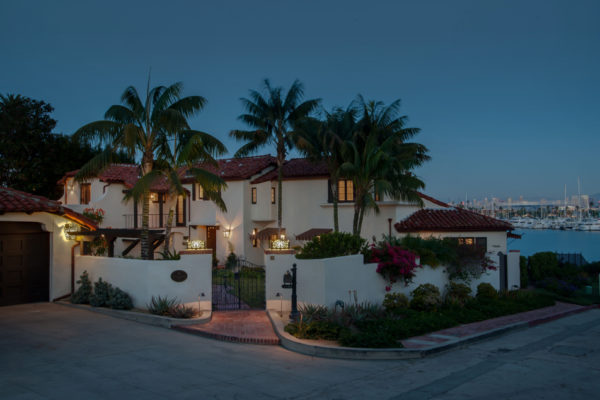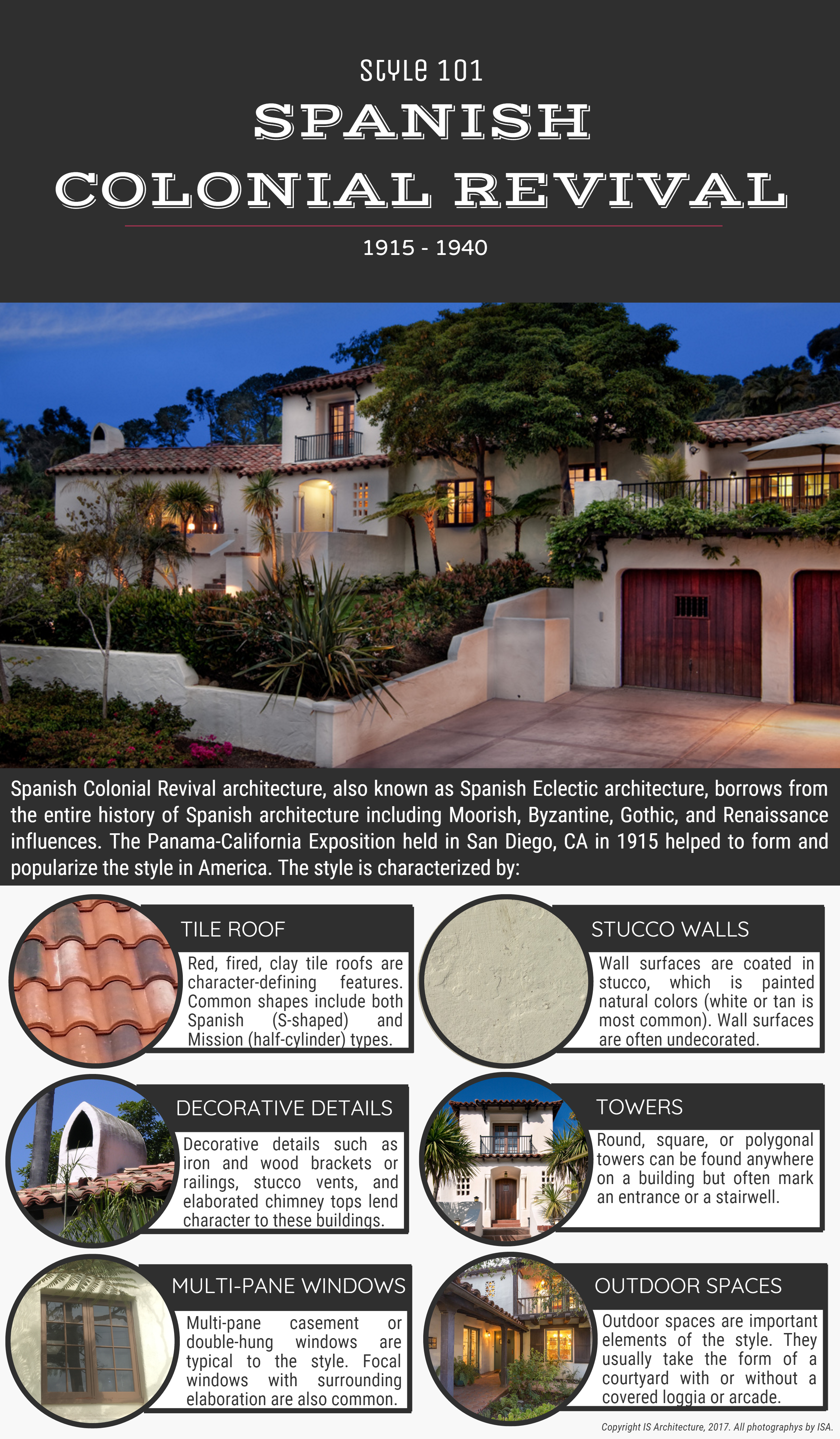Style 101: Spanish Colonial Revival
The Spanish Colonial Revival style includes a wide range of elements influenced by Spanish colonial architecture in the United States. The style’s bright stucco walls and red tile roofs have a distinctly Mediterranean flair that seems appropriate for the style’s Southern California origins, but revival architecture of this sort can be found throughout the country. Examples can incorporate elements from the broad history of Spanish architecture, including Moorish, Gothic, Byzantine, and Renaissance sources.
The Panama-California Exposition of 1915 in San Diego, CA, was perhaps the greatest force in popularizing Spanish Colonial Revival architecture in America. The Spanish style of the exposition’s architecture was deliberately selected to be in contract to previous expositions in the Eastern United States and in Europe. The display was so successful that Spanish Colonial Revival architecture became perhaps the dominant architectural style of San Diego in the 1920s (with Craftsman in a solid second place).
Southern California can claim a particularly close relationship with the style due to the work of Richard Requa, a Master Architect who worked in this style. In the mid-1920s, Requa visited the Mediterranean and determined that this style was perfectly suited to Southern California, where he was living at the time. He returned and began developing what he called the Southern California Style, an adaptation and refinement of the broader Spanish Colonial Revival umbrella style. San Diego is home to many Requa works and to works clearly inspired by Requa’s Southern California Style.
There are a staggering 1,200+ historic resources designated in San Diego for their Spanish Colonial Revival architecture! Could yours be next? Check out our handy infographic below to see if your home features the defining characteristics of the Spanish Colonial Revival style!


